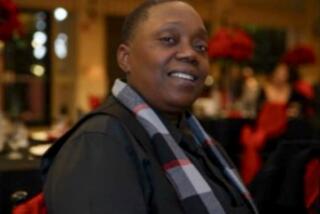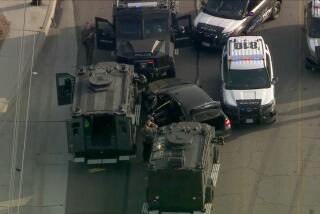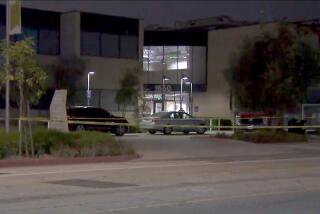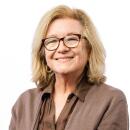Santa Monica, SMC Pact Ends Parking Fight
- Share via
The City of Santa Monica and the Santa Monica College have reached a landmark agreement to end a protracted and often bitter fight over parking, which for years has spilled over from the school into nearby neighborhoods.
Under the agreement, the city will establish a preferential parking district for residents who live near the school and the college will be allowed to rent a 5-acre parcel at the Santa Monica Airport, including space for classes at the airport’s Douglas Museum, for the next 10 years.
The college also agreed to build two parking garages on campus that will add 1,200 spaces by April 17, 1991, while the city will provide a free shuttle service and temporary remote parking lots during the construction.
Everybody Won
“The neighbors win because they get preferential parking, the city wins . . . and the college won,” said Richard Moore, president of the college. “This is one of the most exciting things that has happened to the college in the last 10 years.”
The City Council approved the agreement unanimously (with Councilman Herb Katz absent) at a meeting on Tuesday night. The Santa Monica College Board of Trustees gave its approval on Monday.
For years, many of the school’s 19,000 students have been forced off the small campus onto residential streets in search of parking, fueling an increasingly bitter confrontation with neighbors.
Last year, a long and complicated series of negotiations began that involved residents, the college and the city, leading finally to the agreement and averting lawsuits threatened by both the school and neighbors.
“We’re delighted to see this could take place,” said Duke Kelso, a Sunset Park resident who formed a group called Safe Streets Santa Monica to pressure for a solution to the parking problem.
Unacceptable to Neighborhoods
“When a neighborhood becomes a parking structure, you don’t have safe streets anymore,” Kelso said. “It was unacceptable to expect two neighborhoods (Sunset Park and the Pico neighborhood) . . . to feel the brunt of this mess.”
The college had claimed that every time it tried to build a parking garage, a neighborhood group would object to the site. The residents had claimed that the college irresponsibly continued to attract students without taking into consideration that there was no place for them to park.
And the college, until now, had resisted a preferential parking district because of fears it would cause a 5% to 10% drop in student enrollment.
With the agreement, however, the college is given some breathing space and in return promises not to oppose the creation of a preferential parking zone.
Under the agreement, college officials said they plan to spend $300,000 to convert the airport museum into a Center for the Humanities this fall to house classes for 1,000 to 2,000 students and 20 teachers. Renting the museum space will cost the college $100,000 annually.
850 Parking Spaces
The college will have 850 parking spaces at the airport, and the city’s free shuttle service will bus students to the campus, which is a mile away.
The college will spend $8 million to build the two on-campus parking garages, school spokesman Bruce Smith said. One will be built on a lot currently used for parking and the other will take up part of the school’s softball field, an issue that previously has raised the ire of the college’s athletic department.
Moore said preliminary conversations were under way to allow college athletes to relocate the softball field to a nearby junior high school.
Boundaries of the 15-block preferential parking district will be formally established at next week’s City Council meeting and will take effect in mid-July, City Manager John Jalili said.
The shuttle service will cost the city $300,000 to $400,000 a year, part of which will be offset by parking permit fees and the college’s lease payments.
At Tuesday’s City Council meeting, officials and residents praised each other at the prospect of solving the parking problem. Councilman Dennis Zane called the negotiations extraordinary, even though Councilman Alan Katz referred to the agreement as a shotgun wedding.
The only objections were raised by three local artists, who had wanted the Douglas Museum site to be given to artists as affordable work space. Councilman David Finkel assured the artists that efforts would continue to find studios.
More to Read
Sign up for Essential California
The most important California stories and recommendations in your inbox every morning.
You may occasionally receive promotional content from the Los Angeles Times.











